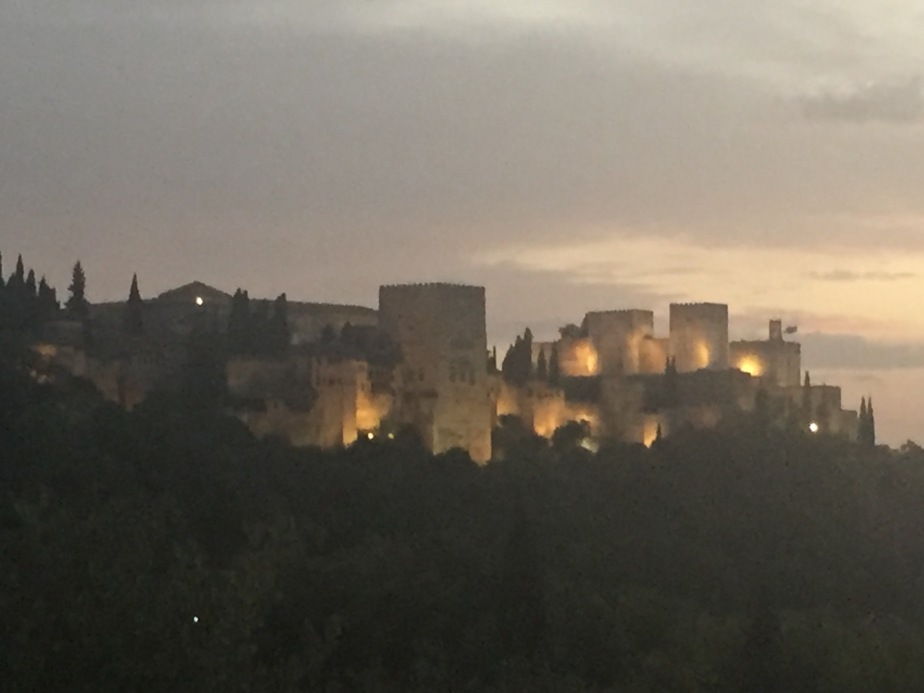Tuvimos un fin de semana maravilloso! We arrived in Granada via bla bla car at 9:30 in the morning on Saturday. The first thing we did was take a stroll up the ‘Carrera del Darro’. This is a narrow, picturesque, cobblestone street that runs parallel with the Darro River. It is a very old street with a bunch of ancient bridges and a great view of the mountainside. We were in search of the nun with the cookies! I had heard from several reliable sources about these semi secret, highly sought after treats made exclusively by a group of cloistered Spanish nuns. These particular nuns are trying to avoid the general public. We walked up and down several narrow, cobblestone streets with stairs stopping several times to ask various people for directions. I had heard that the nuns were located at the ‘Monasterio de San Bernardo’. We finally stumbled upon a three chambered lazy susan and a door bell, both built into a wall of the monestery. There is a sign on the wall with directions as to what to do and a list of the different varieties of treats that we could order. We looked at each other and than I rang the bell. After about 3 long minutes, a nun peeked out from behind this lazy susan ! We placed our cookie order and put the money down. About 5 minutes later our cookies appeared! It was quite the experience.

We were than off to ‘The Alhambra’ and the ‘Generalife’. The Alhambra is a massive palace and fortress complex located at the foot of the Sierra Nevada mountains. The 1st historical documents known about the Alhambra date back to the 9th century. However, the 13th century marked the Alhambra’s most glorious period. Than in 1492, after the Christian Reconquista, the Alhambra was surrendered to the Catholic monarchs. Isabella of Castile and Ferdinand II of Aagon than made extensive repairs and installed the Royal House and the headquarters of the General Captaincy of the Kingdom of Granada in the Alhambra. This is where Christopher Columbus received royal endorsement for his expedition. The last Emir (an Emir is a Muslim ruler) of Granada was Boabdil. There is a famous legend about him and his mother the Sultana Aixa al Hurra (the honored). No woman in history fought like Aixa to save Granada. However Queen Isabella was determined to conquere Granada. And she did in the year 1492. Isabella went to see Boabdil to get the keys to The Alhambra and noticed that he was crying. It was at this time that Aixa looked at her son and said the famous words “Do not cry as a woman for what you could not defend as a man”. 



We walked around The Alhambra for over 3 hours and it is truly amazing.



